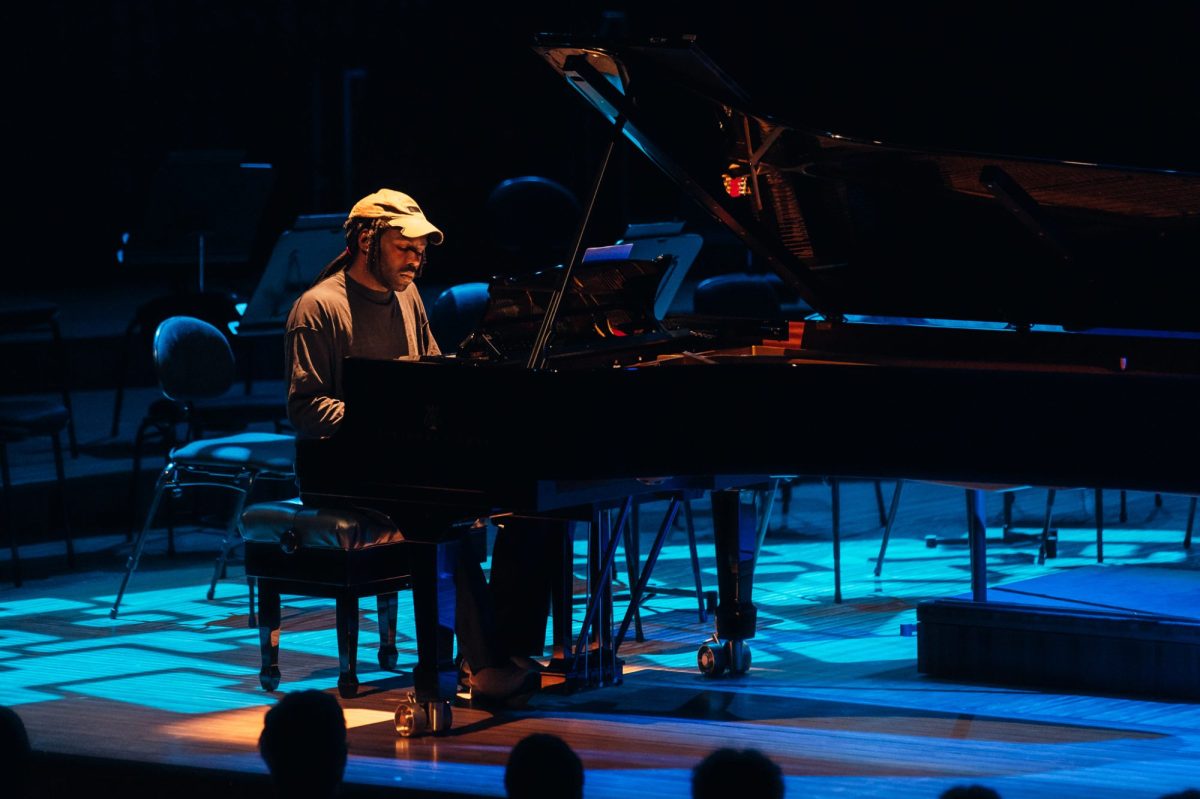Devonté Hynes has become a ubiquitous name in modern music. Starting with the dance-punk band Test Icicles in his teens, he moved to the quirky folk-pop of Lightspeed Champion before emerging as Blood Orange, leaving an indelible mark on the music landscape.
British-born, New York-based and classically trained, Hynes as Blood Orange blends indie pop, R&B, electronic, indie rock and funk. His early 2010s productions and collaborations with Solange, Mariah Carey, Carly Rae Jepsen and A$AP Rocky highlight his ability to infuse his signature sensibility into diverse musical worlds, creating a cohesive yet eclectic sound that reshapes genre boundaries.
This versatility extends to his classical compositions, showcased in this performance at the Sydney Opera House with the Sydney Symphony Orchestra, playing selected works from his film scores.
When Hynes stepped on stage, the crowd erupted. The no-phones policy freed hands to clap, welcoming the artist with unrestrained enthusiasm. Hynes’ magnetism was palpable; dreads peeking out from a khaki baseball cap, his humble and demure demeanour signalled a man as grateful to be there as the audience was to see him.
For his opening solo piano piece, the Concert Hall was bathed in purples, blues and soft yellows. With the intimacy of a campfire, Hynes began to delicately tap the keys, offering an unadorned performance with the same poignant sensitivities of his known work. It served as an apt palate cleanser for fans of Blood Orange, the perfect introduction to the universe of Hynes’ classical compositions.
To welcome the Sydney Symphony Orchestra, the overhead lights turned on as Hynes stood, thanked the audience and pardoned himself. Conductor Matthew Lynch took the stage, tapping his baton as the lights remained on. This overhead lighting during the orchestral sections felt jarring at times, making some segments feel like a rehearsal.
However, ears and hearts don’t lie and the Orchestra’s rendition of Hynes’ ‘Naked Blue’ evoked an overwhelming sense of becoming, capturing the essence of adolescent emotional teething, the radical autonomy and the tenuous nature of such motions. As it reached its peak, the frenetic strings and triumphant brass conveyed that growing pains are eventually overcome and the diffidence finally ends.
Adam Tendler, a renowned New York-based pianist and long-time collaborator, joined Hynes for a two-piano piece, ‘The Longest Ride’, a Hynes composition from Luca Guadagnino’s We Are Who We Are. Hynes’ mastery over the refrain created a feeling of mental pacing, with the audience as voyeurs to a deep, almost romantic dialogue between the two pianists. If Hynes was the overthinking mind, then Tendler was the landscape, the moving scenes and blurring colours as they took the longest ride together. Their synergy was apparent, with shifting harmonies and interweaving melodies falling perfectly within the pockets they created for each other.
The orchestra rejoined the stage for ‘Happenings,’ featuring Tendler’s virtuosic cadenza, which included striking keys and sweeping fingers across strings, making the piano groan atmospherically.
Audiences eager to see Hynes join the Orchestra instead saw Tendler join Hynes again for the final piece. The composition by African American composer Julius Eastman was a highlight. Often considered a misfit in classical music, Eastman used his art to challenge racial tensions, much like Hynes, who, as a fluid black man in the classical music world, finds inspiration in Eastman’s legacy.
A focused Hynes played with delicate yet firm hand, ensuring Eastman’s legacy was handled with the utmost respect. When not playing, Tendler’s gaze remained fixed on Hynes, ensuring he didn’t miss his cue, as if acknowledging Hynes’ authority over Eastman’s work.
Read: Dance: momenta, Roslyn Packer Theatre
If Blood Orange explores the anxieties of modern living, Devonté Hynes’s classical compositions offer resolution and acceptance. His performance at the Sydney Opera House, like his film scores, spanned the entire emotional spectrum, unifying his diverse musical journey and guiding the audience from tension to harmony.
Devonté Hynes: Selected Classical Works with the Sydney Symphony Orchestra was performed for one night only on 29 May 2024 as part of Vivid LIVE
Conducted by Matthew Lynch





